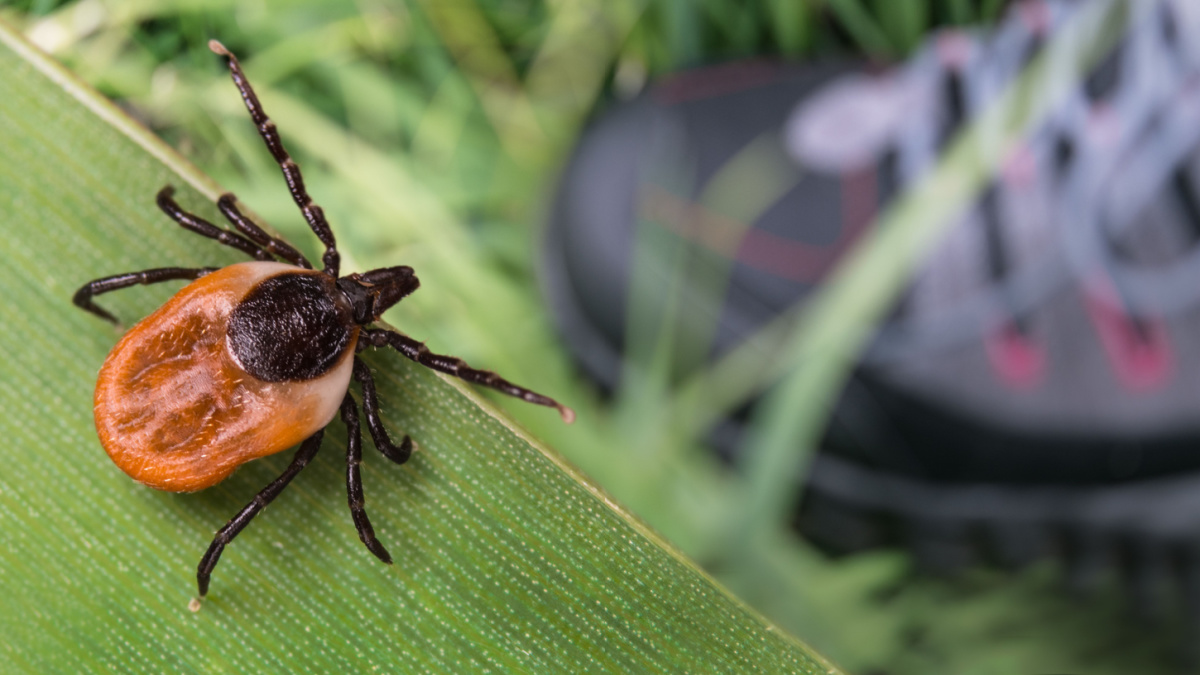Ticks are small, blood-sucking parasites that can carry various diseases, including Lyme disease, Rocky Mountain spotted fever, and Babesiosis. These parasites can easily infest your yard if you have pets or wildlife living in or around it. To understand the risks of ticks in your yard, you need to be aware of the symptoms of tick-borne diseases. Some of the common symptoms include fever, headache, muscle aches, and a rash.
To reduce the risk of ticks in your yard, you need to take preventive measures such as keeping your lawn trimmed, removing leaf litter and debris, and creating a barrier between your yard and wooded areas. You can also use tick repellents and tick tubes to control the tick population in your yard. Understanding the risks of ticks in your yard is essential to protect yourself, your family, and your pets from these dangerous parasites. By taking preventive measures and being aware of the symptoms of tick-borne diseases, you can enjoy your yard without worrying about the risks of ticks.
Identifying Common Tick Species In Your Area
Identifying the common tick species in your area is an essential step in protecting yourself, your family, and your pets from tick-borne diseases. Some of the most common tick species found in North America include the blacklegged tick, the lone star tick, and the American dog tick. These ticks can carry a range of diseases, including Lyme disease, Rocky Mountain spotted fever, and ehrlichiosis.
To identify the tick species in your area, you can consult with a local pest control professional or use online resources from reputable sources like the Centers for Disease Control and Prevention (CDC). Once you know which ticks are prevalent in your area, you can take steps to prevent tick bites, such as wearing long sleeves and pants, using insect repellent. Make sure you also check yourself and your pets for possible infestation.
Creating A Tick-Proof Barrier Around Your Property
Creating a tick-proof barrier around your property is an effective way to prevent these pests from entering your yard. This involves clearing brush and tall grass, trimming trees and shrubs, and removing leaf litter and other debris that ticks can hide in. Mow your lawn and create a barrier of wood chips or gravel around the perimeter of your yard to make it more difficult for ticks to cross.
In addition to these measures, you may want to consider using tick repellent products on yourself and your pets when spending time outside. This can include natural remedies like essential oils or chemical-based products like DEET or permethrin. By taking these steps to create a tick-proof barrier around your property, you can greatly reduce the risk of tick bites and the diseases they can transmit.
Using Natural Repellents To Keep Ticks At Bay
One of the most effective ways to keep ticks at bay is by using natural repellents. These repellents are made from essential oils and other natural ingredients that are safe for humans and pets. Some of the most popular natural repellents include lemon eucalyptus oil, lavender oil, peppermint oil, and tea tree oil. These oils can be mixed with water and sprayed around the yard to repel ticks and other insects.
Another natural repellent that has been proven to be effective is diatomaceous earth. Made from fossilized remains of tiny aquatic organisms, diatomaceous earth can be sprinkled around the yard to create a barrier that repels ticks and other insects. It is important to note that diatomaceous earth should be used with caution, as it can be harmful to beneficial insects like bees and butterflies. However, when used properly, it can be an effective and safe way to keep ticks at bay.
Properly Maintaining Your Lawn And Landscaping To Deter Ticks
Ticks thrive in tall grass, leaf piles, and overgrown shrubs, so it’s important to keep your lawn trimmed and tidy. Mow your lawn regularly, and keep your shrubs and bushes trimmed to prevent them from becoming too dense. Additionally, removing any leaf piles or debris from your yard can help to eliminate tick habitats and reduce the risk of tick bites.
Another way to deter ticks is by incorporating plants that are natural tick repellents into your landscaping. Some examples of natural tick repellent plants include lavender, rosemary, and eucalyptus. Planting these in your yard can help to keep ticks at bay while adding some natural beauty to your landscaping. Overall, maintaining a well-kept yard and incorporating natural tick repellents into your landscaping can help to reduce the risk of tick bites and keep your family and pets safe.
Ticks Prevention In Pets
One of the most important steps in fighting back against ticks in your yard is checking yourself and your pets for ticks after spending time outdoors. Ticks are notorious for latching onto humans and animals, and it’s important to catch them early before they have a chance to spread disease. After spending time outdoors, thoroughly check yourself and your pets for ticks. Pay close attention to areas where ticks are known to hide, such as behind the ears, under the arms, and in the groin area. If you do find a tick, remove it immediately using tweezers and dispose of it properly. Be sure to monitor the area for any signs of infection or illness, and seek medical attention if necessary.
Understanding The Importance Of Tick-Borne Illness Prevention
Preventing tick bits is very important especially for humans. While these blood-sucking insects mainly feed on animals, they can cause dead diseases if they happen to suck on humans. Few of the rare diseases transmitted from ticks to human are Lyme disease, Rocky Mountain spotted fever, and Powassan virus. Tick-borne illnesses are a serious concern, especially during the summer months when tick activity is at its peak. Therefore, understanding the importance of tick-borne illness prevention is crucial to protect yourself and your loved ones from these dangerous diseases. Prevention measures include wearing protective clothing, using insect repellents, performing regular tick checks, and keeping your yard clean and well-maintained. By taking these steps, you can reduce the risk of tick bites and prevent the spread of tick-borne illnesses.
Protection Against Tick-Borne Diseases
If you reside in places that is known for ticks, you must take action to protect your family and pets from tick-borne diseases. Prevention is the key, and there are several ways to achieve it. Regularly checking for ticks on yourself, your family members, and your pets is essential, especially after spending time outdoors.
Keeping your yard clean and well-maintained, using tick repellents, and wearing protective clothing are also effective ways to avoid tick bites. Additionally, seeking medical attention promptly if you suspect a tick bite or developing any symptoms of tick-borne diseases is crucial for early diagnosis and treatment. By taking these preventative measures, you can minimize the risk of tick-borne diseases and enjoy the great outdoors safely.




